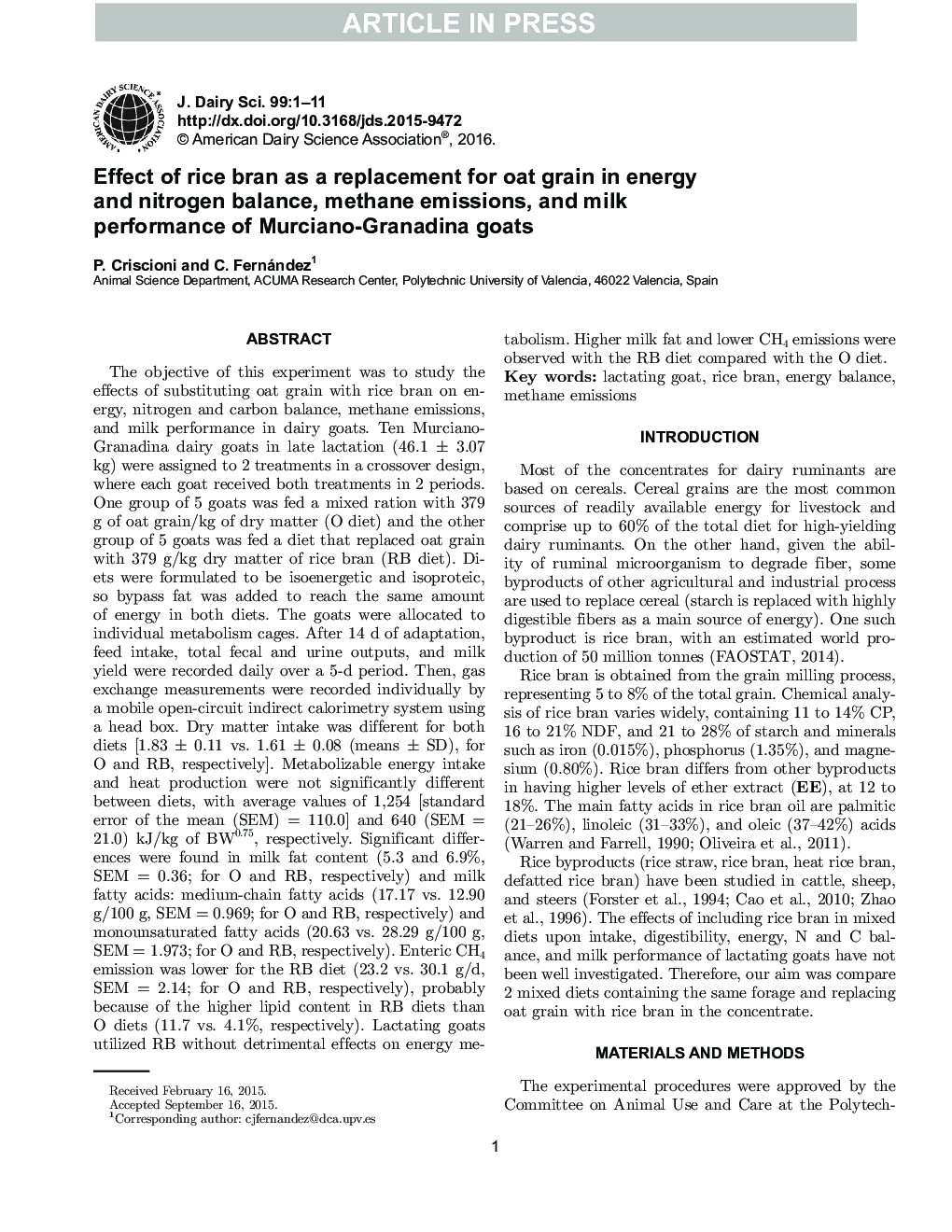| کد مقاله | کد نشریه | سال انتشار | مقاله انگلیسی | نسخه تمام متن |
|---|---|---|---|---|
| 10974007 | 1108021 | 2016 | 11 صفحه PDF | دانلود رایگان |
عنوان انگلیسی مقاله ISI
Effect of rice bran as a replacement for oat grain in energy and nitrogen balance, methane emissions, and milk performance of Murciano-Granadina goats
ترجمه فارسی عنوان
تأثیر سبوس برنج به عنوان جایگزینی برای دانه های جو دوسر در تعادل انرژی و نیتروژن، انتشارات متان و عملکرد شیر بز های مورسیانو گرانادینا
دانلود مقاله + سفارش ترجمه
دانلود مقاله ISI انگلیسی
رایگان برای ایرانیان
کلمات کلیدی
بز بز سبوس برنج، تعادل انرژی، انتشار گاز متان،
موضوعات مرتبط
علوم زیستی و بیوفناوری
علوم کشاورزی و بیولوژیک
علوم دامی و جانورشناسی
چکیده انگلیسی
The objective of this experiment was to study the effects of substituting oat grain with rice bran on energy, nitrogen and carbon balance, methane emissions, and milk performance in dairy goats. Ten Murciano-Granadina dairy goats in late lactation (46.1 ± 3.07 kg) were assigned to 2 treatments in a crossover design, where each goat received both treatments in 2 periods. One group of 5 goats was fed a mixed ration with 379 g of oat grain/kg of dry matter (O diet) and the other group of 5 goats was fed a diet that replaced oat grain with 379 g/kg dry matter of rice bran (RB diet). Diets were formulated to be isoenergetic and isoproteic, so bypass fat was added to reach the same amount of energy in both diets. The goats were allocated to individual metabolism cages. After 14 d of adaptation, feed intake, total fecal and urine outputs, and milk yield were recorded daily over a 5-d period. Then, gas exchange measurements were recorded individually by a mobile open-circuit indirect calorimetry system using a head box. Dry matter intake was different for both diets [1.83 ± 0.11 vs. 1.61 ± 0.08 (means ± SD), for O and RB, respectively]. Metabolizable energy intake and heat production were not significantly different between diets, with average values of 1,254 [standard error of the mean (SEM) = 110.0] and 640 (SEM = 21.0) kJ/kg of BW0.75, respectively. Significant differences were found in milk fat content (5.3 and 6.9%, SEM = 0.36; for O and RB, respectively) and milk fatty acids: medium-chain fatty acids (17.17 vs. 12.90 g/100 g, SEM = 0.969; for O and RB, respectively) and monounsaturated fatty acids (20.63 vs. 28.29 g/100 g, SEM = 1.973; for O and RB, respectively). Enteric CH4 emission was lower for the RB diet (23.2 vs. 30.1 g/d, SEM = 2.14; for O and RB, respectively), probably because of the higher lipid content in RB diets than O diets (11.7 vs. 4.1%, respectively). Lactating goats utilized RB without detrimental effects on energy metabolism. Higher milk fat and lower CH4 emissions were observed with the RB diet compared with the O diet.
ناشر
Database: Elsevier - ScienceDirect (ساینس دایرکت)
Journal: Journal of Dairy Science - Volume 99, Issue 1, January 2016, Pages 280-290
Journal: Journal of Dairy Science - Volume 99, Issue 1, January 2016, Pages 280-290
نویسندگان
P. Criscioni, C. Fernández,
